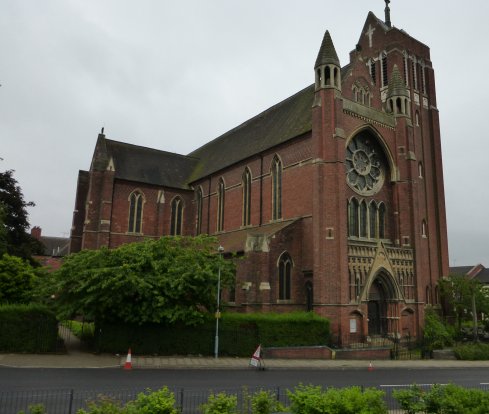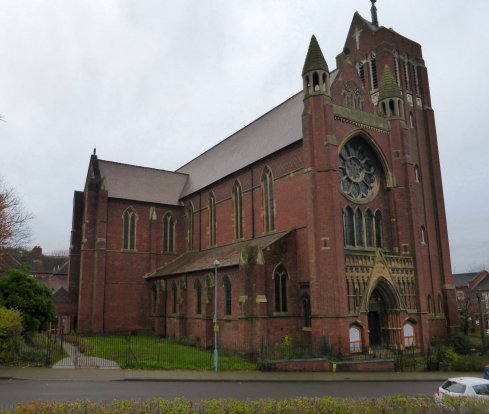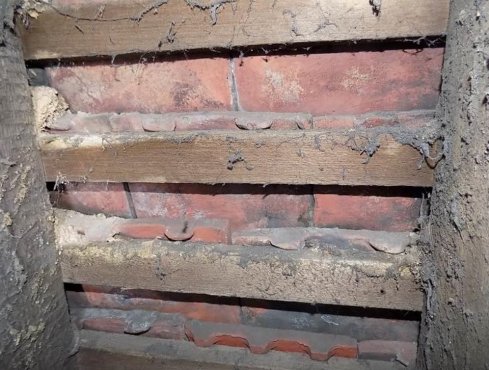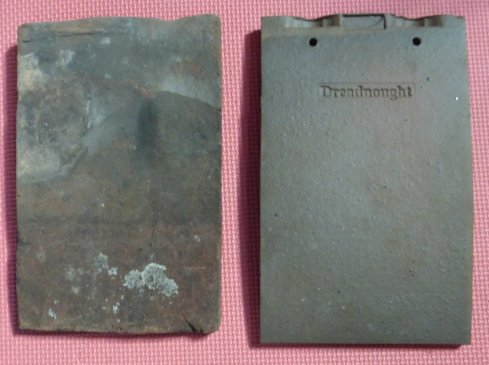Phase II Roof Renewal
This project completed the renewal of the Victorian roof of St Alban's Church started by our Phase I Roof Renewal project in 2016.
Completion of the renewal of the roof, together with other high-level repairs to the building, was made possible by a major grant of up to £222,000 from The National Lottery Heritage Fund, made possible by money raised by players of The National Lottery.
Awarded under the now closed "Heritage Lottery Fund (Grants for Places of Worship)" scheme to our project " Revealing St Alban's Hidden Heritage", the grant covered about 43% of the estimated£518,000 need to complete the renewal of the roof, repairs to the high-level walls and windows while scaffolding is in place, provision of improved step-free access to the church and a range of new interpretive materials and activities to make the church and its heritage accessible to a wider range of people with different backgrounds. Additional funding came from VAT offset grants from the Listed Places of Worship Grant Scheme and the PCC contributed about £212,500 towards the cost of this work and an additional £12,500 for related work that could not be included in the grant, making a total of £225,000. Of this our Restoration Fund provided about £51,000 from donations and grants specifically for restoration work and the remaining £174,000 came from reserves that the PCC has put aside from unrestricted bequests together with contributions from the reserves of our Printing Fund and Maintenance Fund.
 Before Renewal of the Roof - June 2016
Before Renewal of the Roof - June 2016
 After Roof Renewal - December 2021
After Roof Renewal - December 2021
What Parts of the Roof were Renewed?
The areas of the of the roof shown in light grey on the plan had already been renewed in our Phase I Roof Renewal project in 2016. The areas shown in dark grey, consisting of the continuous roof of the nave, chancel and apse, the north transept and the north and south aisles, were renewed in this phase. The striped area is the roof or the Lady Chapel, which required only minor repairs as it was renewed together with the adjacent vestry roofs in 1995.

Why Did the Roof Need Renewing?
The original Victorian terracotta tiles with which the church was roofed in 1881 had no holes for nails. They simply hung from the battens fixed to the rafters by two small projections ('nibs'). Originally the tiles were plastered on the inside of the roof ('torched') to hold them in place, but the torching had long since crumbled away leaving the tiles vulnerable to lifting by the wind.

Handmade Victorian tiles hanging by two nibs from the batterns, with one modern machine-made three-nib replacement at the bottom. Traces of torching plaster remain where protected by the left-hand rafter.
The new brown brindle Dreadnought tiles have nail holes as well as nibs, and every tile will be nailed in place to provide increased resistance to damage by the wind. The colour of the tiles, already used in the Phase I roof renewal, was chosen to match the current weathered appearance of the old terracotta tiles, not the "flower-pot red" appearance that the roof must have had in 1881 before it was darkened by the polluted air of Victorian Birmingham.

Old and new tiles

A hole in the north slope of the nave roof from inside.

Hole in the north slope of the nave roof from outside.
As there was no waterproof 'sarking' membrane inside the tiles of the main roof, rain entered where tiles were missing and eventually seeped through the stone vaulting staining the ceiling, while tiles falling from the nave roof damaged the aisle roofs. As long ago as 1998 the PCC was seeking (without success) a major grant from English Heritage to enable the renewal of the Victorian roof. Since then deterioration had continued, while damaging storms became more frequent. In 2016 the state of the roof led to the church being added by Historic England to its register of buildings at risk: "the terracotta tiled roof has passed the point of repair and needs to be replaced urgently".
Work commenced in March 2020 and, despite a delay of nine weeks due to Covid-19, was completed in December 2020. In 2021 the church was removed from Historic England's register of buildings at risk.
Project Architect was Richard Lamb of Hook Mason Ltd. and Principal Contractors were Croft Building & Conservation Ltd.
You can follow the course of the work to renew the roof through a series of progress pages starting here: http://www.saintalban.co.uk/restoration/roofrenewal2/marchtomay/.
You can read our press release about the award of the grant from The National Lottery Heritage Fund, made possible by money raised by players of The National Lottery, here: Protecting and Revealing the Heritage of St Alban’s Church; and the earlier press release about a development grant to enable us to prepare the detailed application for the grant here: St Alban's PCC, Birmingham, wins National Lottery Support.
